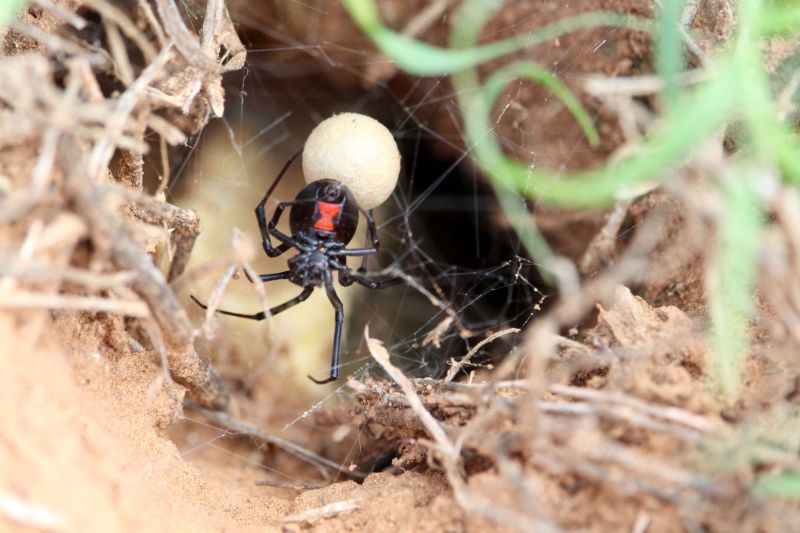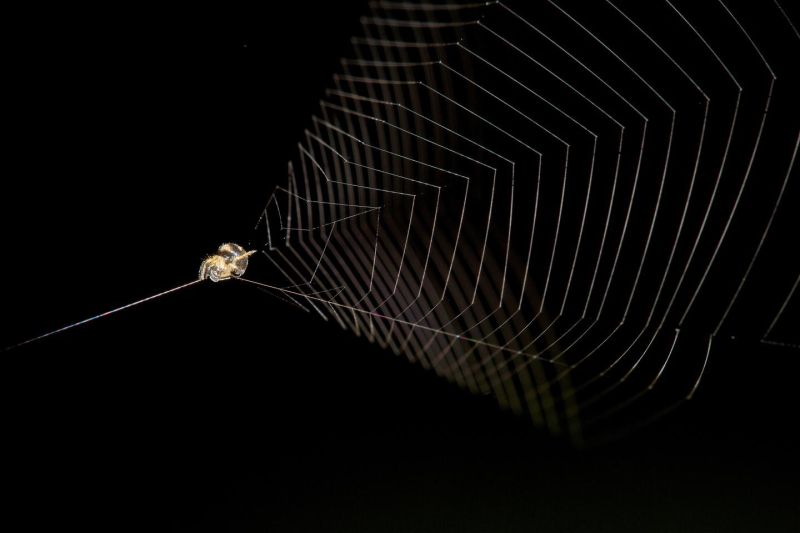
Giant parachuting spiders have you scared? Here's how spiders can help (researchers, at least)
Perhaps you are disturbed by news of an invasive, palm-sized spider that will soon spread up and down the East Coast by using its web like a parachute. You might think, surely, the Jorō spider — nicknamed the parachute spider — will find few fans or friends?
Not quite. Scientists and engineers regularly study spiders to understand how they move, use toxins and silks, and how they sense prey and predators. Each area of exploration offers myriad opportunities for advancing the fields of biomedicine, biomaterials, robotics and more. Here are just a few examples of NSF-funded studies of spiders and how they can serve rather than scare us.
1. Learning from nocturnal hunters
An interdisciplinary team of biologists is studying evolution of traits that make nocturnal spiders such good hunters — of insects, not people. The team is asking how deinopid spiders use small rectangular webs that they hold with their legs — different from the more common web that probably comes to mind. How do these spiders use their large eyes to see in the dark? How did their senses become specialized? This research could help advance night motion-sensitive devices, new materials for industrial or military use — and more. The researchers are also developing an interactive bilingual game in English and Spanish to help teach children mathematics through modeling.
2. Studying web construction
Some spiders "glue" their webs together with a substance that performs in challenging environments, like high humidity, better than some commercial glues. A multidisciplinary team of researchers is examining the spider superfamily, Araneoidea, characterizing the protein makeup of and variation among the six different types of dry fibers and a wet adhesive silk they use to spin their webs. Understanding the differences between the construct of each type of silk will enable engineers to design environmentally friendly glues with tailored properties.
3. Examining what makes egg sacs so strong
Spiders have a special silk they use to construct egg cases. Compared to silkworm silk or spider dragline silk, spider egg-case silk has not been studied in detail. This material has a unique toughness and a composition that differs from that of other spider silks. Researchers are looking at how the structure and mechanical properties of the egg-case silk help determine its function. The goal is to develop new bionanomaterials that can be predictably tuned for specific optical, mechanical and thermal properties.
4. Inspiration for tiny robots
While understanding the makeup of spiderwebs and silk can spark innovation in technologies, so can a spider's use of and movement on their webs. Biomechanics research in ultrafast organisms led one NSF CAREER awardee to study how the Peruvian slingshot spider — we know — parachutes, slingshots, we won't even tell you about jumping spiders — can store enough energy to accelerate 100 times that of a cheetah. The spider uses its web like a spring, holding it tensed for hours until an unsuspecting mosquito comes near. Then the spider releases the latched spring and launches at the prey. Knowledge about the energy-storing properties of the silk could help create power sources for tiny robots and other devices. The researcher has partnered with artists and translators to create comic books in several languages that can be used as educational tools.
You can check out more spider-focused, NSF-funded research via the award search tool or check out this video.





